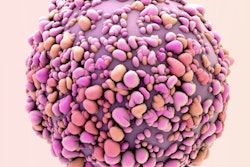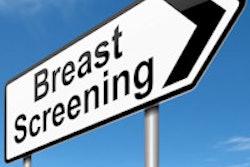
Adding molecular breast imaging (MBI) to screening mammography in women with dense breast tissue may increase overall costs and the rate of benign biopsies, but because the combination finds more cancer, the cost per cancer detected is lower than with mammography alone, according to a study published in the June issue of the American Journal of Roentgenology.
In addition, the cancers found are clinically significant, rather than examples of overdiagnosis, wrote lead author Carrie Hruska, PhD, of the Mayo Clinic in Rochester, MN, and colleagues (AJR, June 2015, Vol. 204:6, pp. 1345-1353).
"The cancers detected ... with adjunct MBI had features of clinical importance: two of 14 occurred in patients with bilateral mammographically occult disease, and 11 of 14 were invasive cancers with a median size of 0.9 cm," the group wrote.
Mining the data
This research used the same data as another study published earlier this year, which found that the combination of MBI and mammography could detect more cancers in women with dense breast tissue at suitable radiation doses for screening, Hruska told AuntMinnie.com.
 Carrie Hruska, PhD, from the Mayo Clinic.
Carrie Hruska, PhD, from the Mayo Clinic."In the work published in February, we showed that MBI can be used for supplemental screening at acceptable radiation doses," she said. "So for this study, we wanted to evaluate whether adding MBI to conventional mammography in women with dense breast tissue was cost-effective."
The current study included 1,585 women with mammographically dense breasts who had screening mammography as well as MBI. Hruska and colleagues tracked the women's imaging tests and biopsies for a minimum of one year, and they calculated the positive predictive value of biopsies performed (PPV3), the benign biopsy rate, the cost per patient screened, and the cost per cancer detected.
Screening mammography alone prompted diagnostic workup in 11% of patients and biopsy in 1.3%, and it identified five malignancies, for a PPV3 rate of 25%, according to the researchers. The combination of screening mammography and MBI had higher diagnostic workup and biopsy rates -- 17.6% and 4.2%, respectively -- but it also found almost four times as many cancers (19), for a PPV3 rate of 28.4%.
"That PPV3 rate is pretty high in the breast imaging world," Hruska said. "Ultrasound tends to be around 6%, while MRI tends to be about 20%."
Benign biopsy rates were 0.9% for screening mammography alone and 3% for the combination. Not surprisingly, adding MBI increased the cost per patient screened, from $176 for mammography alone to $571 for the combination. Yet Hruska's group found that the cost per cancer detected was lower for the combination ($47,597) than for mammography alone ($55,851).
"Screening with a combination of mammography and MBI resulted in savings in cost per cancer detected of $8,254 compared with the cost of mammography alone," the authors wrote.
So what does MBI have to offer, when compared with other imaging modalities being considered for supplemental screening of women with dense breasts? Function over form, Hruska said.
"There's a reservoir of cancers among women with dense breast tissue that can't be found with anatomical techniques like mammography or even digital breast tomosynthesis," she said. "But functional modalities can find them, and they may be the key to reducing breast cancer mortality."





















